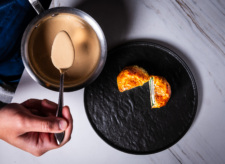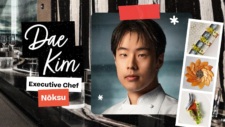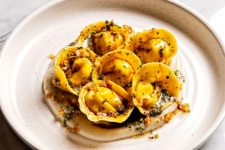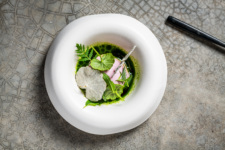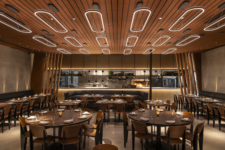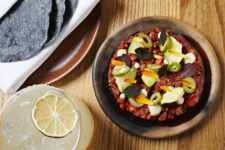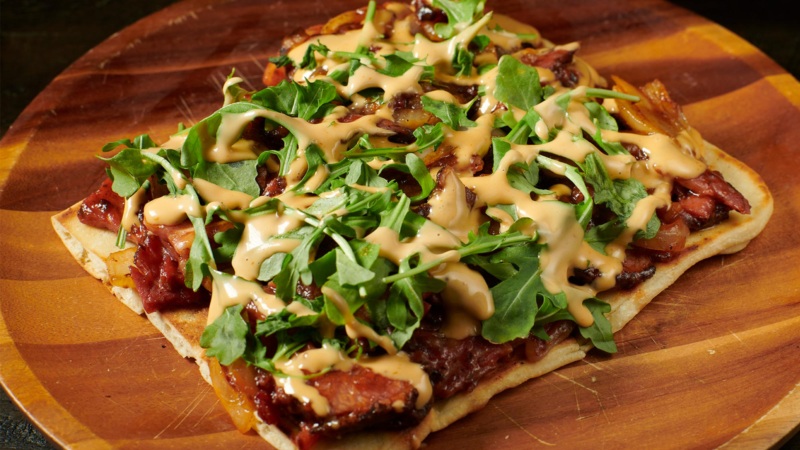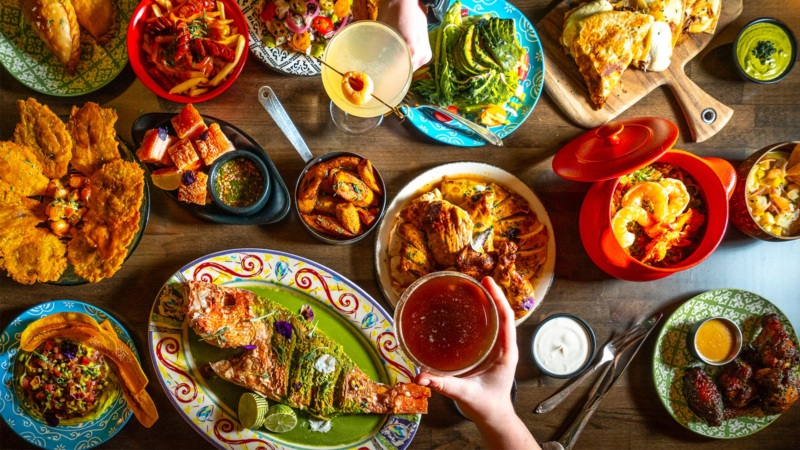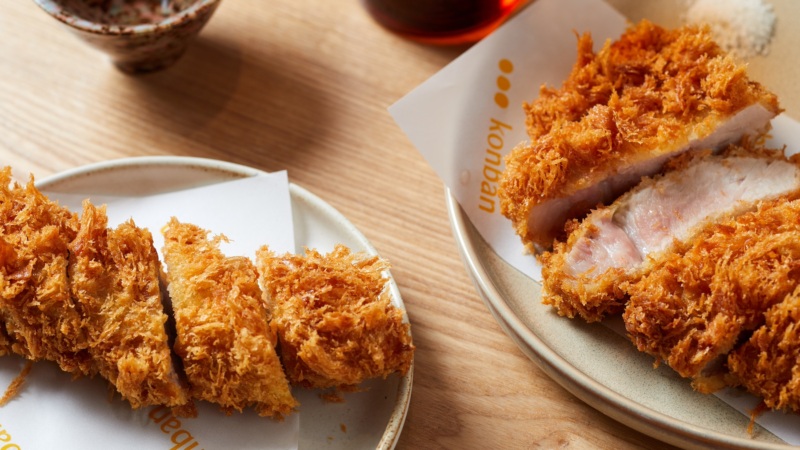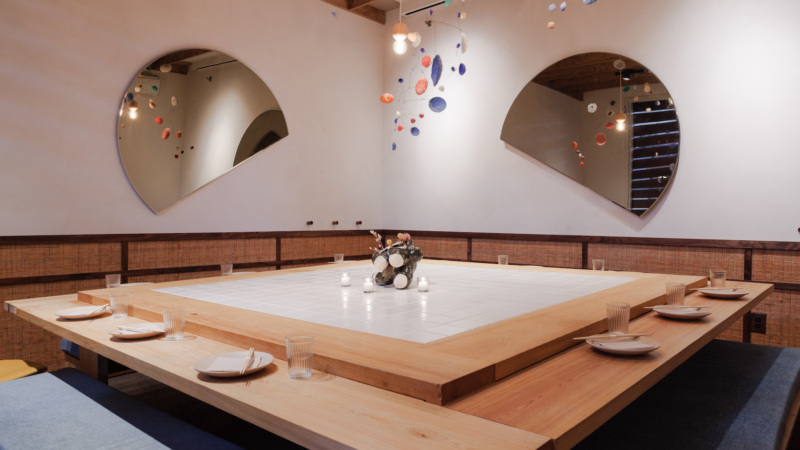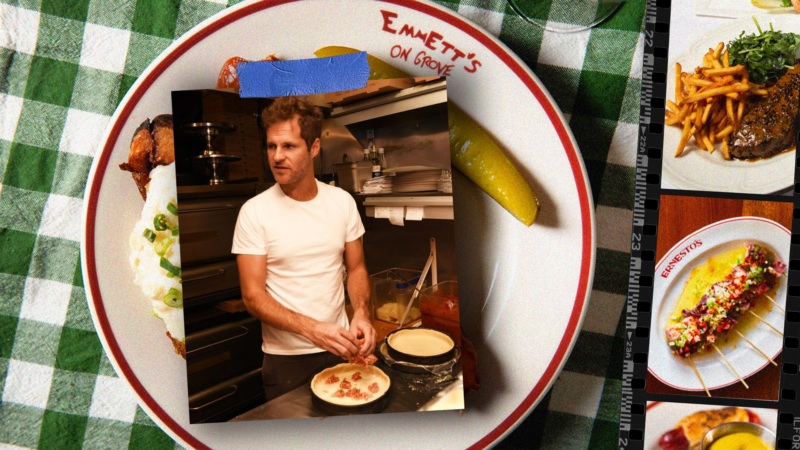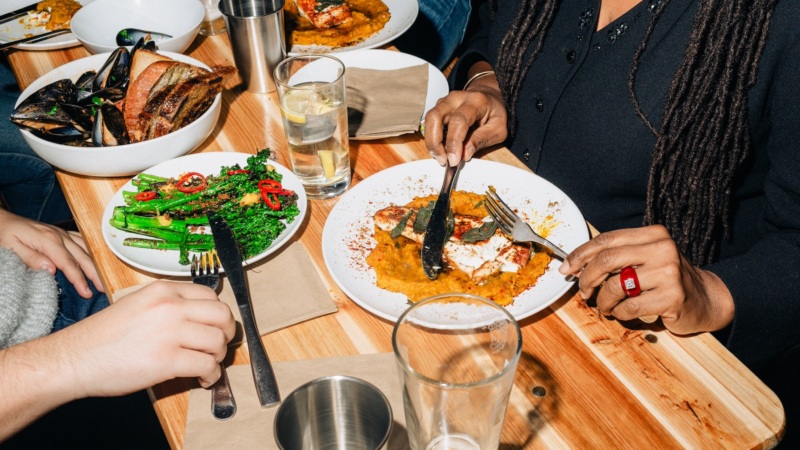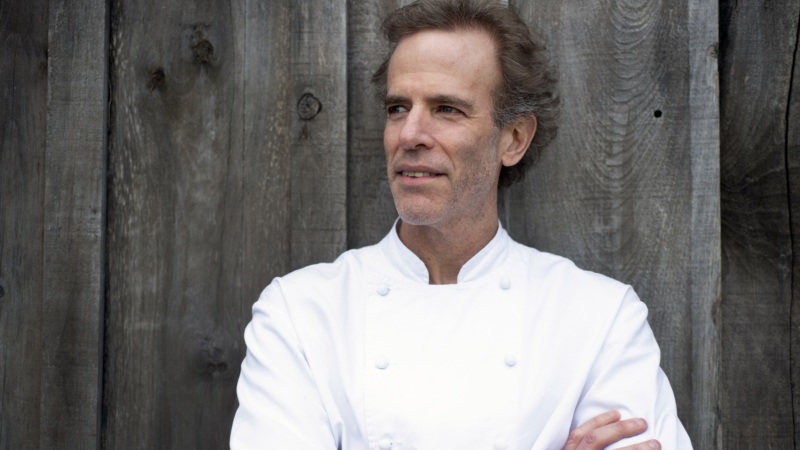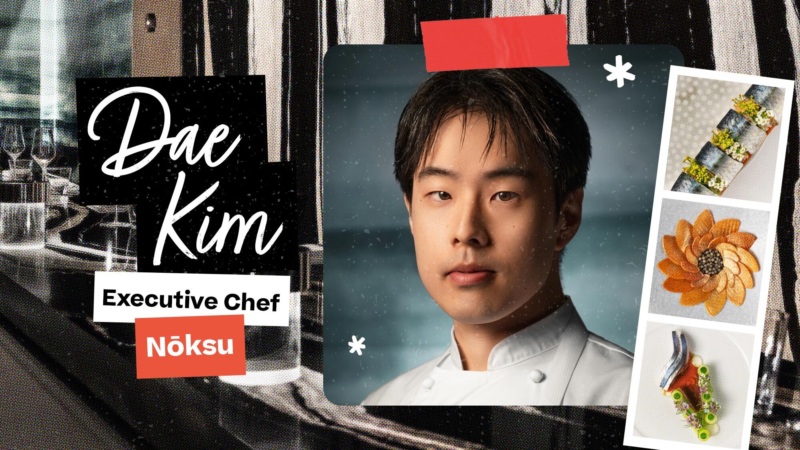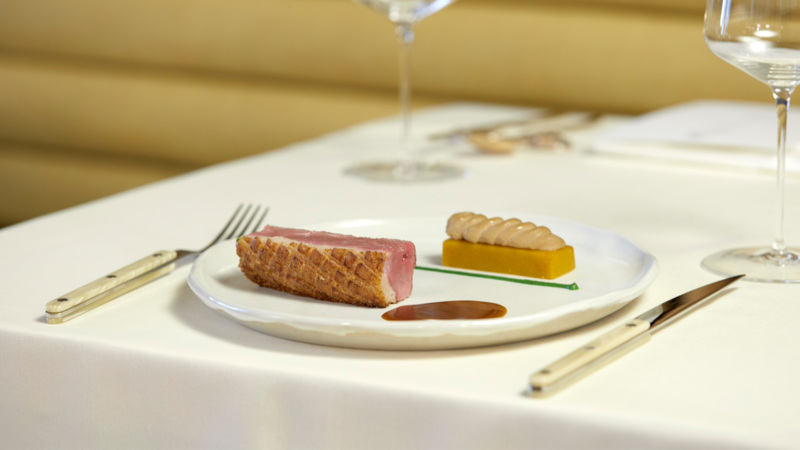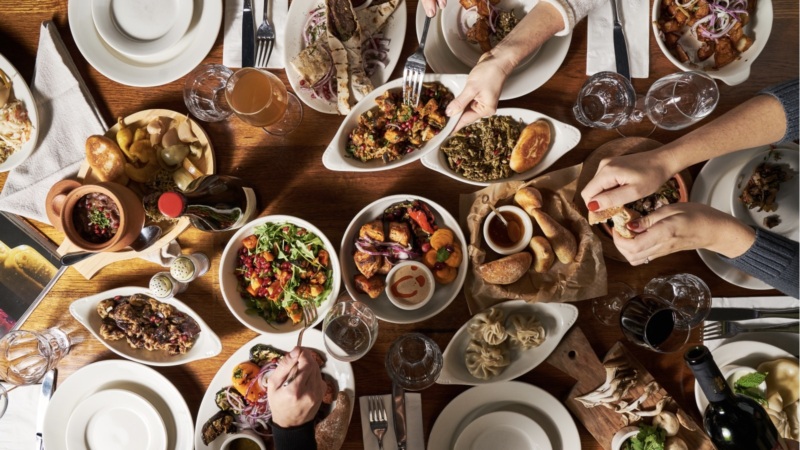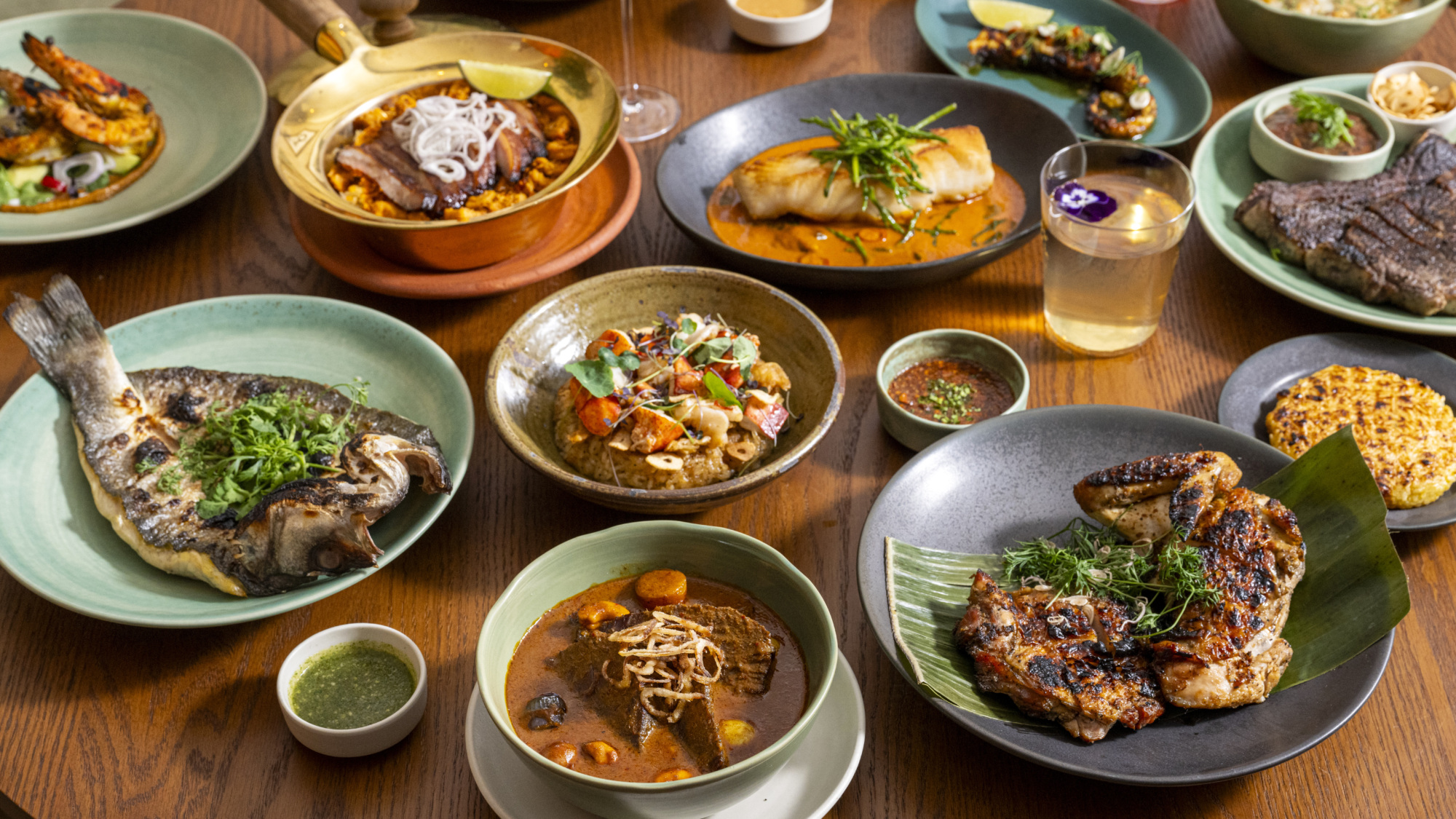
Bangkok Supper Club Embraces Street Food, As You’ve Never Tasted It Before
The fondest food memories in Bangkok typically take place under string lights and atop rickety plastic stools in the dark of night: bowls of thick jok, with orbs of peppery meatballs and matchsticks of ginger; grilled chicken skewers with caramelized edges paired with a dense rectangle of sticky rice; dry tom yum noodles stained with dark soy sauce and sprinkled with fried garlic and crushed peanuts.
Thai food is delicious at all hours of the day, but its vibrant and thrilling combinations of spicy, sour, sweet, and savory really reveal themselves at night — especially after a round or two of Johnnie Walker topped with Singha soda water.
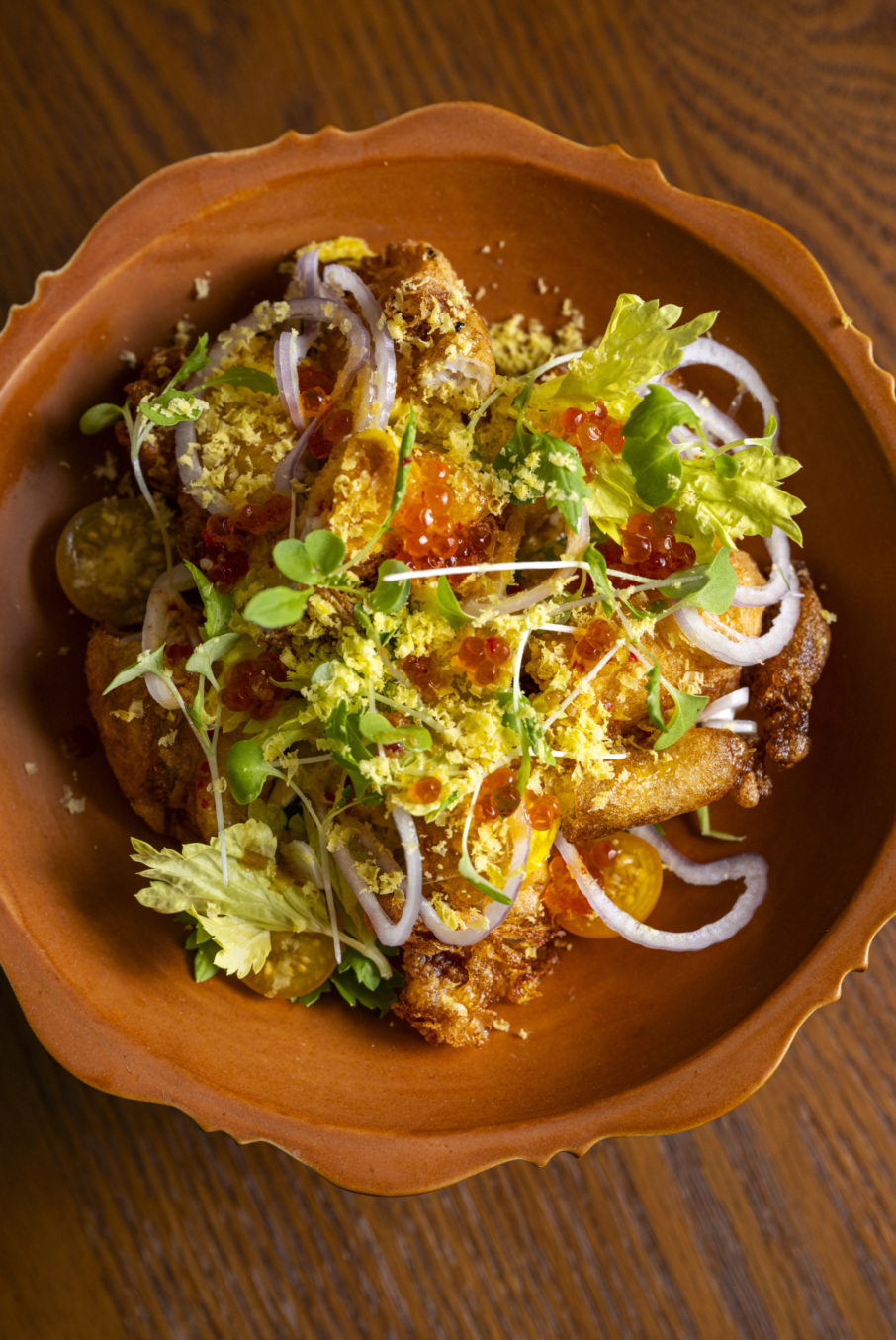
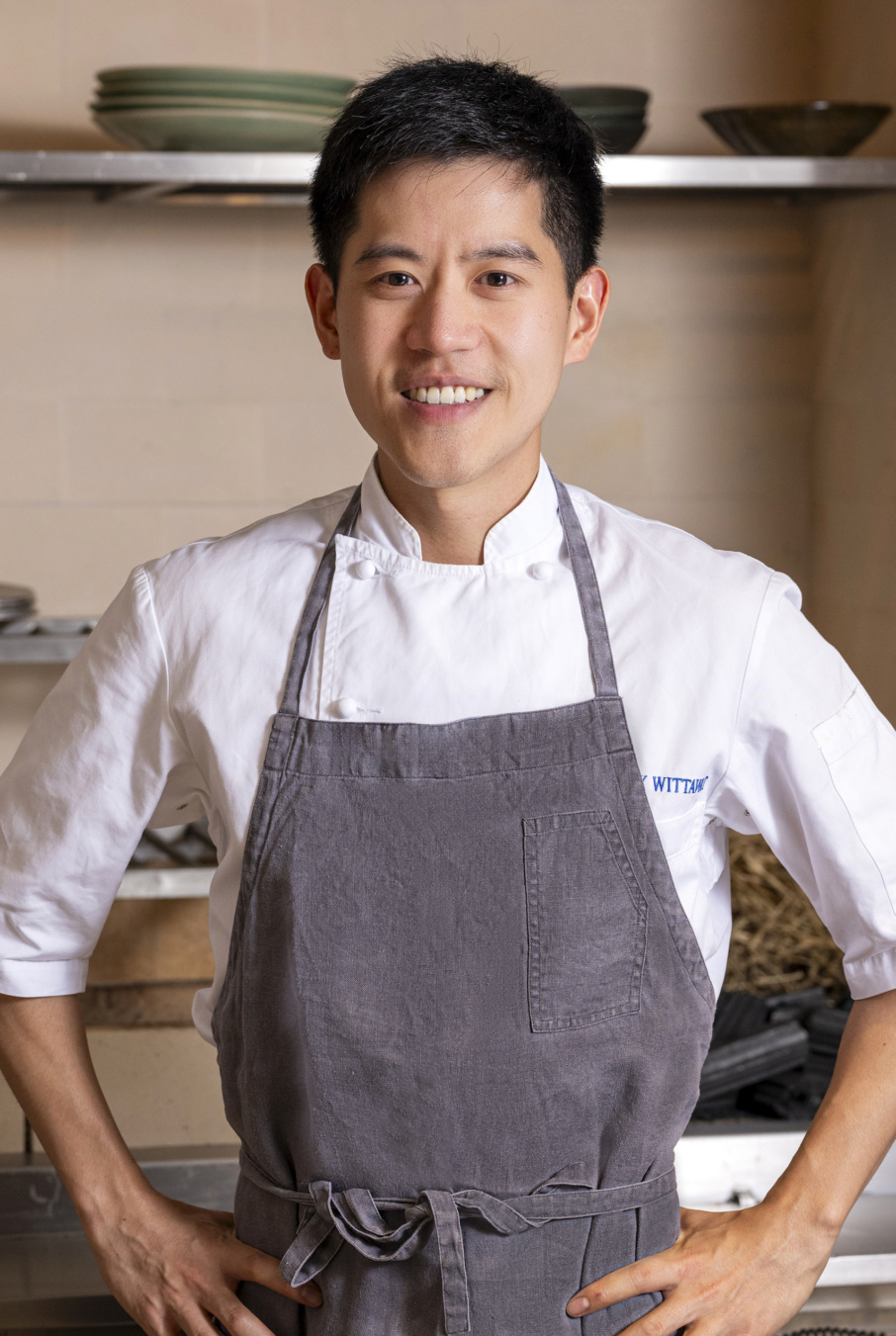
This late-night allure is at the heart of Bangkok Supper Club, a new sister restaurant to New York’s cherished Fish Cheeks. Where Fish Cheeks is bright and airy, with a focus on seafood and perhaps more coastal memories of Thai eating, Bangkok Supper Club strives for sleek and subdued, its expansive menu built around reinterpretations of the midnight munchies found in night markets in the Thai capital. As owner and partner Jenn Saesue puts it, the goal is to serve “inventive Thai cuisine inspired by Bangkok’s late-night food scene with authentic flavors, different presentations, and cooking techniques focused on charcoal grilling.”
Yes, at the center of Bangkok Supper Club is a charcoal grill that touches almost every dish. It is one of several things likely to set the restaurant apart from manifestations of Thai cooking found in New York. And for Supper Club’s executive chef, Max Wittawat, it is an opportunity to paint a very different picture of Thai American cooking.
“Thai food is a very balanced food,” Wittawat says. And he wants his new menu to prove just that — to subvert the very idea that Thai food has to be offensively spicy, shockingly sour, or atrociously pungent and fishy to be deemed authentic (whatever that even means). Instead, as he explains, the essence of Thai cooking is to find harmony between those four key elements, to build flavors through curry pastes, stocks, woks, vinegar, and chili pastes — as well as controlled smoke from the charcoal grill.
The result is that, for New York aficionados of Thai food, Bangkok Supper Club will feel a bit more out there; you will not find pad see ew or fried rice on their menu. Do not even mention pad Thai. For Saesue, Bangkok Supper Club is an attempt to catch up with Bangkok’s thriving fine dining scene. “There are so many new, young chefs that are coming out of Bangkok and they’re doing so many interesting, forward-thinking things,” she says. “We want to take that lead in New York because the comfort food scene is overrun at this point,” she adds — even, yes, at Fish Cheeks. “It’s not that it’s bad, but we want to stay away from that. It feels like it’s time for another version of high cooking now.”
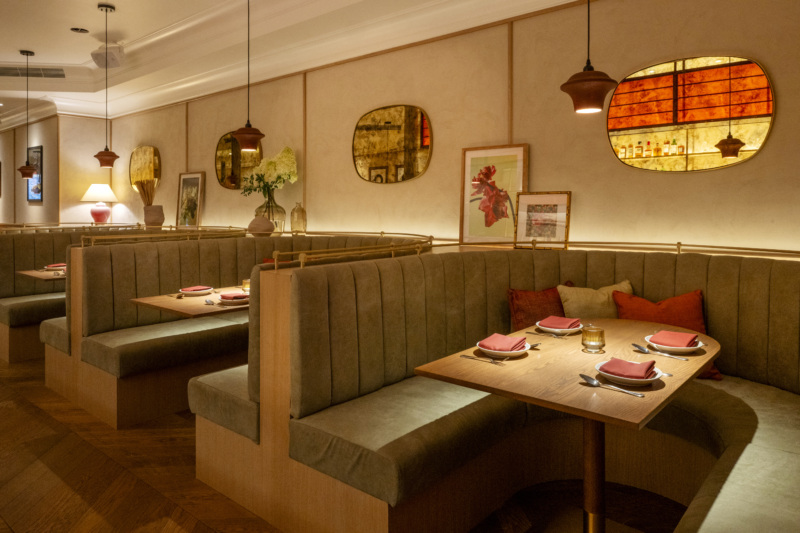

Wittawat is, of course, one of those young chefs coming out of Bangkok. He graduated from Le Cordon Bleu in Thailand’s capital back in 2009 and competed on “Iron Chef” in three countries: the United States, Japan, and Thailand. His mentor, Ian Kittichai — the chef behind New York’s famed dessert restaurants Spot Dessert Bar — brought him stateside and formed his connection with Saesue. Ironically enough, the kind of experimental take Saesue was seeking out in a new chef and partner is precisely what Wittawat has been around for years, and is even a bit jaded by. Coming to New York, he admits he was hoping to cook some comforting, homey meals, which meant he and Saesue would need to meet somewhere in the middle.
This resulting menu shows how they did just that, with help from that grill: You might start a meal with small plates of charcoal grilled prawns, beef tongue, and octopus. There’s a charcoal grilled branzino — a foil to the steamed version found at Fish Cheeks — served with a ferocious chile and lime dipping sauce. The marinated chicken, cooked over charcoal, arrives with khao jee — grilled sticky rice patties coated in eggs, a common night-market food often found in the northeastern region of Thailand. Oyster jok, a rice porridge crammed with oysters and sun-dried scallops and shrimp, features broth made from smoked fish bones. “Even if the dish is not directly from the charcoal grill, there’s still some element of it,” Witttawat explains. “We have a dessert with roasted sweet potatoes where we peel the skin and blend it into powder to use in ice cream. So even our dessert is related to charcoal.”
But the compromise also gives him plenty of room to share his interpretations of true Thai classics, which are all on the Supper Club menu: khao mun gai (or Thailand’s riff of Hainan chicken-fat rice), massaman curry, gai yang (charcoal grilled chicken), pork jowl, and even an egg salad. It’s common, good food, filtered through Wittawat’s expertise and experience in Bangkok’s modern dining scene.
And although street food is at the heart of Bangkok Supper Club, Wittawat went a step further in his inspiration — looking to humble dishes cooked at home. Take the yum khai dao, or fried egg salad. Wittawat has begun with a simple dish that’s often prepared in Thai dormitories, and turned it into an extreme celebration of eggs. The base of the dish is prepared with intensely creamy duck eggs, which are fried until a crispy skirt forms around the edges, but the yolk remains runny. Jewels of trout roe are embedded throughout an herby salad that rests atop the eggs. To intensify the egg flavor, cured egg yolk is grated over the top. “It’s egg on egg on egg,” Wittawat laughs. “I love to play with texture, and this dish shows that.”
Thai people love to eat everything at the same time. From salad to main courses to stir fries, that’s how we balance out all the flavors.— Jenn Saesue, owner, Bangkok Supper Club
The aforementioned khao mun gai also has a Cinderella transformation. Instead of a simple presentation of boiled chicken and rice — a delicious comfort in and of itself — Wittawat stuffs chicken wings with gingery sticky rice before they’re plunged into a deep fryer. The result is satisfyingly crunchy on the outside, chewy and sticky on the inside. The wings are finished with a sprinkling of dehydrated fermented soybean sauce, or tao jiew, a classic Thai pairing for khao mun gai dreamed up in a new way.
And Saesue and Wittawat are also seeking balance through the way meals at Bangkok Supper Club are composed — namely, through sharing plates. Family-style dining is, to say the least, strongly encouraged. “Thai people love to eat everything at the same time,” Saesue says. “From salad to main courses to stir fries, that’s how we balance out all the flavors. Some dishes are sweet, some spicy, some salty — it’s meant to be shared, and that’s what I want New Yorkers to learn.”
This has been a complicated lesson at times. Saesue laughs when recounting how diners at Fish Cheeks in the past would order whole steamed fish as main courses — multiple fish for a table of four. (Try to avoid that at Bangkok Supper Club.)
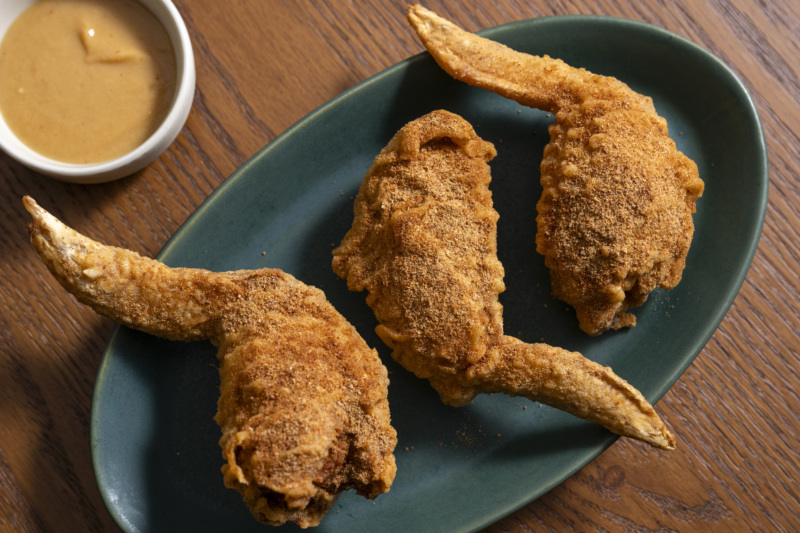

The other dazzle in the equation at Fish Cheeks is the impressive cocktail program, and Saesue knew the new spot would need something similar. The grill smoke meant to be a signature for Bangkok Supper Club would also have to show up in the glass. Hence the Pinewood Fire, which combines smoked lapsang souchong tea with Thai rum, banana vermouth, and Sauvignon Blanc. Or the Mango Flame, which finds its smoky flavor through mezcal shaken with mango, honey, lemon, and tonic water.
Other cocktails may lack smoke but follow Fish Cheeks’ pattern of being undeniably and inventively Thai. Consider the Fish Sauce — a potable emblem of the mainstay Thai cooking ingredient, which combines gin, cabbage broth, fresh pears, clarified milk, and citrus with the namesake sauce.
The net effect is to have transported the current culinary vitality of Thailand’s capital to New York — in a way that also adapts the cooking to its adopted home, and perhaps cloaks it in the guide of comfort food. This is perhaps the genius in what Wittawat and Saesue are pulling off: dishes with simple names, evocative of what a Thai grandmother might cook — and yet each plate and each drink is anything but simple. As such, Bangkok Supper Club is a reminder that even the seemingly straightforward can contain untold depths.
Kat Thompson is a Bangkok-born, Los Angeles-raised writer. She was previously a senior staff writer of food & beverage at Thrillist and has written for Food & Wine, Bon Appetit, Eater, and more.

